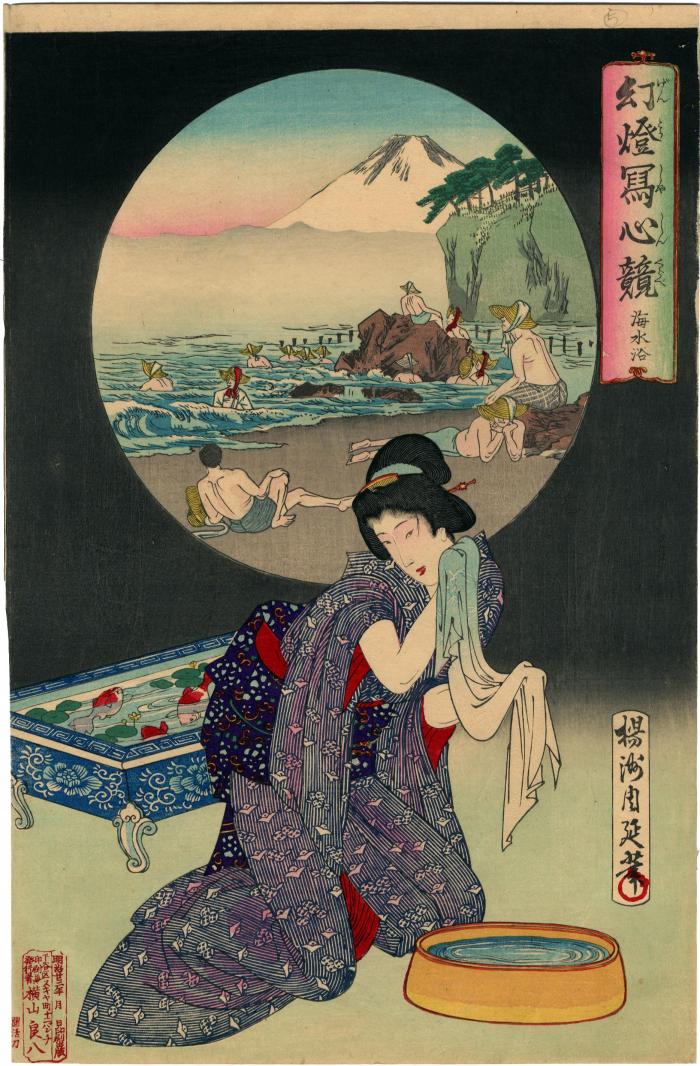Toyohara Chikanobu (豊原周延) (artist 1838 – 1912)
Bijin washing herself from 'Collection of Magic Lantern Images: Bathing' (幻燈写心競 - 海水浴)
1890
9.125 in x 14.125 in (Overall dimensions) Japanese woodblock print
Signed: Yōshū Chikanobu hitsu (楊洲周延筆)
Publisher: Yokoyama Ryōhachi (横山良八)
Date: Meiji 23 (治明 廿三年)
There are any number of possible translations of the title of this series, 幻燈写心競: 'A Collection of Magic Lantern [Images]'; 'A Comparison of Magic Lanterns'; 'A Competition of Magic Lanterns'; and others. One even refers to 'Daydreaming' or 'Just plain thinking of...' Any or all are easily acceptable.
****
Behind the woman, in a circular inset, holiday-makers in sun-hats enjoy themselves on a beach with a view of mount Fuji. Despite the sun hats, the figures all appear to be men, one who has even kept his shirt on while in the water. Immediately behind the woman is a shallow ceramic goldfish bowl with small lotus plants.
****
In a pdf file posted online by the Yokohama Art Museum in Japanese it says in translation, basically: A magic lantern, which can be said to be the prototype of today's slide projectors, was introduced to Japan from the West in the 18th century.
Pictures and photographs drawn on glass slides are magnified and projected using lenses, and candles and lamps are used as light sources. Gas lamps and electric lamps were used later.
During the Meiji period, it was enjoyed as a pastime by the people, and at the same time it was used as an educational tool in schools. It was also used, as a rule, in this series by Chikanobu. The dreams and aspirations of women in the age of enlightenment are depicted in a circular background that resembles a magic lantern.
beautiful woman picture (bijin-ga - 美人画) (genre)
landscape prints (fūkeiga 風景画) (genre)
mitate-e (見立て絵) (genre)
Meiji era (明治時代: 1868-1912) (genre)
Yokoyama Ryōhachi (横山良八) (publisher)
